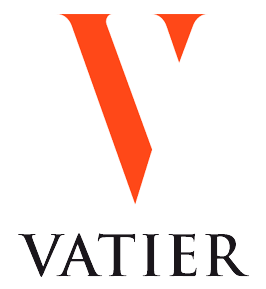Provided for by the ELAN law of 2018, the Environmental Regulation 2020 (ER2020), applies, with a few years’ delay due to the health crisis, since 1 January 2022 and gradually.
The ER2020 is the successor to the TR2012 (2012 thermal regulation). As its name suggests, the ambition is broader: while TR2012 aimed to limit the primary energy consumption of new buildings, the ER2020 aims to control the carbon footprint of the building sector, which is responsible for more than a quarter of CO2 emissions in France, and to make them thermally and environmentally independent. New buildings will eventually have to produce more energy than they consume.
- What constructions?
The ER applies to all building permits or prior declarations submitted (except in overseas departments)
• From 1 January 2022: for buildings or parts of buildings intended as residences (excluding constructions which “led to the signature, before 1 October 2021, of a contract for services” and DHCC contracts
• From 1 July 2022: for office, primary and secondary school buildings,
• From 1 January 2023: for extensions to these constructions and temporary constructions
Until 31 December 2022, the construction of buildings with a surface area of less than 50 m² and extensions to buildings with a surface area of less than 150 m² are exempt.
This does not apply to amending building permits and renovation projects.
- Objectives: to achieve carbon neutrality by 2050
• Reduce the carbon impact of new buildings throughout their life cycle, from construction to demolition: by encouraging i) construction methods that emit little greenhouse gases or that allow them to be stored, such as the use of bio-sourced materials ii) the consumption of low-carbon energy sources – in particular renewable heat.
• Continue to improve energy performance and reduce energy consumption: strengthen the “bioclimatic need” indicator (known as “Bbio”).
• Guarantee to the inhabitants that their dwelling will be adapted to future climatic conditions: to take better account of summer comfort.
- What are the requirements?
The energy and environmental performance requirements are set out in Decree 2021-1004 of 29 July 2021 https://www.legifrance.gouv.fr/jorf/id/JORFTEXT000043877196
(new art. R. 172-1 et seq. of the CCH). These are result requirements:
• The energy design of the building expressed in points, noted in Bbio ═ evaluation of heating, cooling and lighting needs
• The limitation of primary energy consumption expressed in kWh/m2/year (Cep and Cep indicators, nr for non-renewable) ═ evaluation of renewable and non-renewable energy consumption for heating, cooling, domestic hot water, lighting, ventilation/auxiliaries as well as lighting/ventilation of car parks; lighting of collective traffic areas, electricity for lifts/escalators
→ limitation of the climate change impact resulting from primary energy consumption expressed in kgCO2eq/ m2 SU/SHAB (indicator Ic energy) ═ introduction of the life cycle assessment method for this impact assessment during the operation of the building, i.e. 50 years.
→ limitation of the climate change impact of building and site components. The overall index is expressed in kgCO2eq/ m2 SU/SHAB (indicator Ic construction) ═ generalisation of the life cycle assessment method.
→ limiting discomfort situations in the building in the summer period: The number of summer discomfort degree-hours, expressed in° C. h (indicator DH) ═ evaluation of the discrepancies between the building temperature and the comfort temperature (between 26 and 28°C)
The annex to article R. 172-4 of the CCH details the values of the indicators but only for detached or semi-detached houses and collective housing.
A further decree is to be issued to determine the levels of requirements for tertiary office buildings and primary and secondary education buildings.
- What thresholds, ceilings and calculations for each indicator?
The minimum values set are verified according to a calculation method defined by order (Art. R. 172-12 CCH).
This is the purpose of the first order of 4 August 2021 (1,838 pages!) which defines the thresholds to be respected in order to reach the above-mentioned requirements, according to the categories of buildings. https://www.legifrance.gouv.fr/download/pdf?id=LBxKOX3Duk3h0j_ck_WBwvf9HBYDu3aSYhPKEIm97w4=
- How to justify the integration of the requirements of the ER2020?
Assessments of new buildings subject to the ER2020 will be included in a feasibility study and two certificates: one for the building permit phase and one for the completion phase. The reference study period is 50 years for all buildings (except temporary buildings).
These regulations result from decree no. 2021-1548 of 30 November 2021 https://www.legifrance.gouv.fr/eli/decret/2021/11/30/2021-1548/jo/texte and two orders published on 16 December 2021.
To access the certificate generation area, click on:

→ The feasibility study on the various energy supply solutions for the construction of a building subject to the ER2020. https://www.legifrance.gouv.fr/jorf/id/JORFTEXT000044501492
• When? Prior to the submission of the building permit application.
• By whom? the project owner
• Purpose: the project owner i) chooses an energy supply system (“prospective system”) ii) and carries out a technical and economic feasibility study comparing the prospective system with at least four alternatives covering the energy supply solutions provided for in 2° of Article L. 122-1 of the French Construction and Housing Code (CCH) (“in particular those that make use of renewable energy sources, combined heat and power production, district or collective heating or cooling systems if they exist, energy-efficient heat pumps or gas-fired condensing boilers”).
→ The certificate of completion of the energy feasibility study and of taking into account the ER2020 upon submission of the application for the building permit https://www.legifrance.gouv.fr/jorf/id/JORFTEXT000044501420
• When? to be attached to the building permit application file
• By whom? the project owner.
• Subject: the order defines the model of this certificate and the procedures for its production. It must certify:
The commitment of the project owner to have carried out the feasibility study;
Compliance with the thresholds for the Bbio and degree-hour indicators;
The commitment of the project owner to be able to demonstrate, before the start of the works, the compliance with the thresholds for the Ic energy and Ic construction indicators, i.e. to have carried out a life cycle analysis of the building in accordance with the requirements of the ER2020;
The requirement for access to natural light;
The commitment of the project owner to take into account the requirements on ventilation systems.
→ Certificate of compliance with the ER2020 on completion of the work https://www.legifrance.gouv.fr/jorf/id/JORFTEXT000044501420
• When? The certificate is attached to the declaration of completion and conformity of the work.
• By whom? Certificate issued on behalf of the project owner by a person referred to in article R122-25 of the CCH (architect, technical inspector, certification body, etc.).
• What? It certifies:
Compliance with all indicators relating to the result requirements of the ER2020;
Certain requirements on the thermal characteristics of the building (e.g. insulation);
For residential buildings, requirements for air permeability and ventilation system;
A consistency check of 10 environmental data used in the life cycle analysis of the building is also included in this certificate.
Where there are several buildings, the requirements must be met for each individual building.
A regulatory certification on energy and environmental performance should also come into force by 31 December 2022.
- Sanctions
These new performances are binding on all building professionals, from the project owner to the control office.
It is the project owner who is required to draw up a computer version, using software that meets the requirements set out in the order of 4 August 2021 (Article 12), at the latest on completion of the work, a standardised energy and environmental study summary.
The data transmitted for the calculation of the values are retained by the project owner, after completion of the work and for at least six years from the date of submission of the declaration of completion of the work (Article R172-8 CCH), to be transmitted to the purchasers within this retention period, to the authorities responsible for monitoring building regulations and to any person required to draw up a performance certificate.
The regime of control and sanction of these new obligations resulting from the ER2020 governed by the control of the rules of construction (CRC) which is the subject since 1 July 2021 of a new Title VIII of the CCH (articles L181-1 and following of the CCH) provides for: criminal, civil, administrative sanctions.
Administrative sanctions :
- A project owner who has not responded to a formal request from the competent administrative authority to provide information and documents may be fined €1,500. It may also be required to fulfil this obligation under a daily penalty payment of up to €150.
- Interruption of work in progress may be ordered.
Criminal sanction :
€45,000 fine for all land users, beneficiaries of works, contractors or any other person responsible for works who do not respect these obligations (the fine can be increased to five times for legal persons – article 131-38 of the criminal code). Imprisonment for repeat offence.
Civil penalty :
Builders shall be liable under the ten-year liability within the meaning of articles 1792 and following of the civil code when the performances are not reached.
However, this possibility will be limited to the demonstration of unfitness for purpose, which is itself conditional on “over-consumption of energy that would only allow the use of the facility at an exorbitant cost”, provided that the conditions of use and maintenance of the facility are deemed appropriate (article L 123-2 of the CCH).
The question of the duty to advise will also become more extensive. The calculations to achieve the objectives are made at the design stage, and subsequent changes to the original project could result in deviations that would no longer achieve the energy performance targets.


